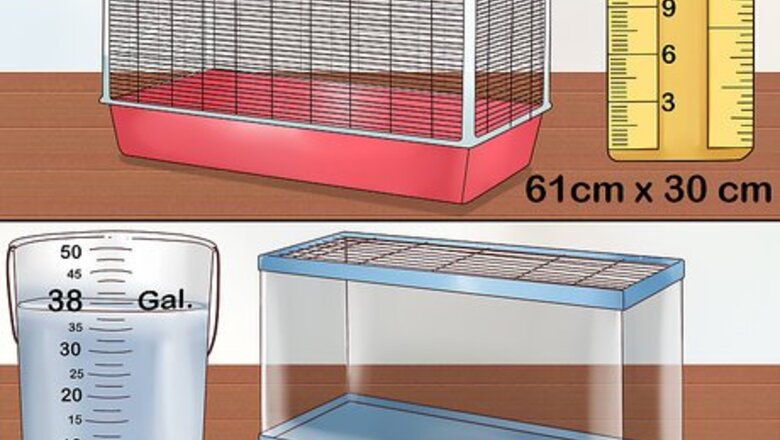
views
Selecting the Right Enclosure
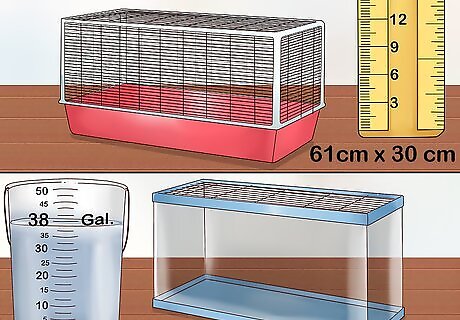
Use either a glass aquarium or a wire cage for your mouse enclosure. You want to minimize the changes that your mouse will escape, as this can be especially dangerous in a house with children. If you choose a wire cage, make sure it’s a cage with a solid bottom. Cages with wire bottoms can be hard on a mouse’s feet. Beware of cages specifically marketed as for mice, because they are often undersized. The minimum size for an enclosure is 24 by 12 inches (61 cm × 30 cm). For aquariums, avoid anything smaller than 10 gallons (38 L). Glass aquariums have poorer ventilation and are not recommended for warm climates.
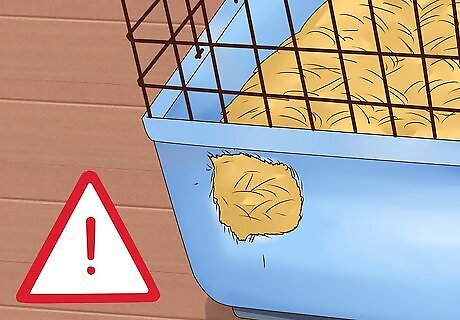
Inspect your mouse’s enclosure for holes. Mice are superstar chewers, and they can chew through wood, paper, and even plastic if they’re determined enough. Avoid any enclosures that rely on these materials, or check frequently for holes in ones that do. If a mouse can get its head through an opening, it can get out. You’d be surprised at how small mice can make themselves to squeeze through a hole to escape!
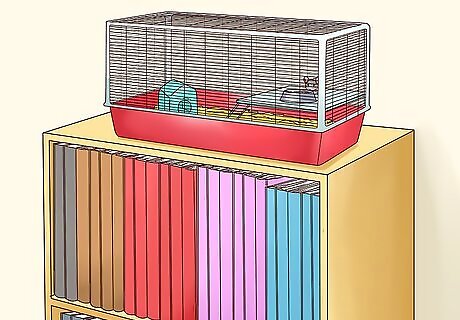
Place the mouse’s enclosure on an elevated surface. Good potential locations are up on a bookshelf or table. This will keep your mouse out of reach of younger children, who may want to take the mouse out of her cage without adult supervision. Keeping the mouse up high will limit their access.
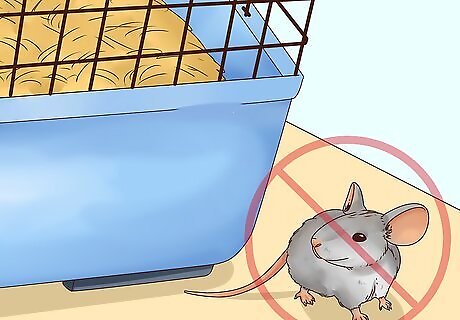
Don’t let your mouse roam free outside of its cage. This could also easily result in it being lost or stepped on, and this could make a child pretty sad. If you do allow your mouse time outside of its cage, make sure it is in a space that is free of small openings that it could escape through.
Teaching Children How to Handle Mice
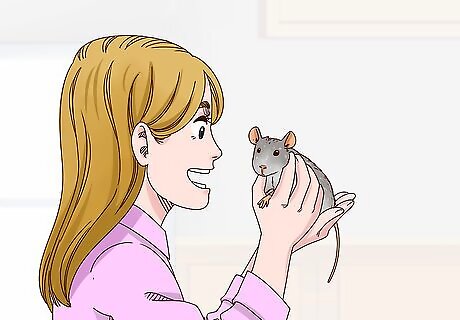
Allow only older children to handle the mouse. Do not let young children (5 years of age or younger) handle mice. Despite their cuteness, mice are not cuddly pets. They are very fast, and many do not enjoy being held. Mice often like to roam about and explore their surroundings, which can be frustrating for children -- especially younger children who don’t quite have the fine motor skills to keep up with them.
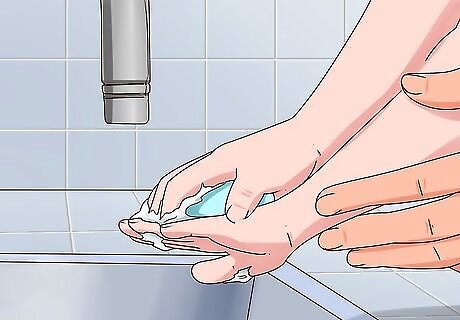
Have children wash their hands both before and after handling mice. Warm water and soap is best. Additionally, remind children to wash hands after touching the mouse’s cage, food containers, toys, and droppings. Mice can make people sick, and vice versa. Young children can easily catch zoonotic diseases (diseases that can be passed from animals to humans) because of their weakened immune systems. This is another reason why children under 5 years of age should not be exposed to mice.

Provide constant supervision. If a child is old enough to interact with the mouse, be present throughout the whole interaction. Try to avoid leaving and doing other tasks. That way, you can react quickly if something goes wrong.
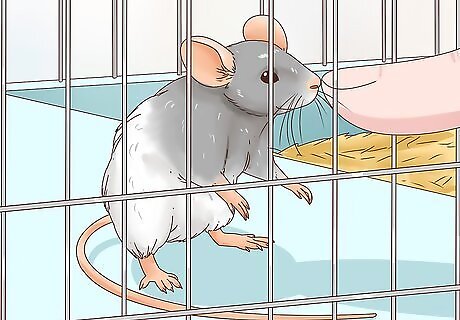
Check that the mouse is awake before handling. Before removing the mouse from the cage, double-check that it is already alert and moving about. If they’re asleep, they will likely be burrowed in a small house or hiding place, as this is where they go to feel safe. Do not wake a sleeping mouse to play with it, as this can leave it feeling disoriented and fearful. If you are trying to tame the mouse, this could also make it harder for the mouse to trust you.
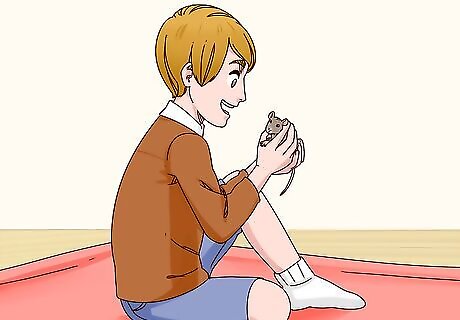
Have children sit on the ground before handling the mouse. Mice can easily jump or fall out of a child’s hands. This is particularly dangerous if the child is standing up or has the mouse on a table. If the mouse falls, it’s possible that they won’t survive the drop. It might be helpful to lay down a towel or blanket where the child will be sitting, in case the mouse falls or leaves droppings.
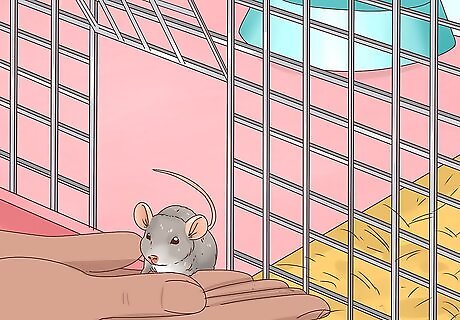
Remove the mouse carefully from its cage. Lower your hand into the cage and allow the mouse to walk up onto your cupped hand. Then, slowly lift it from the cage. Don’t squeeze or grip the mouse’s body -- they are fragile! If your mouse is not tame enough to do this, work your way towards gaining its trust. This will take some time, but you can start by lowering your hand into the mouse’s enclosure and letting it approach and sniff you. Mice are prey animals, but they are also very curious, so they will eventually warm up to you if you repeatedly demonstrate to them that you are not a threat. When holding a particularly skittish mouse in your palm, you can stabilize it by gently holding onto the very base of its tail. Do not grip it tightly, or attempt to bend the tail yourself. Their tails are used for balance and they’re pretty sensitive. Never, ever pick up a mouse just by its tail! Especially towards the end of the tail. There’s a common misconception that this is okay, but it can actually be quite dangerous. You could easily injure or scare the mouse, and also hurt your chances of gaining the mouse’s trust.
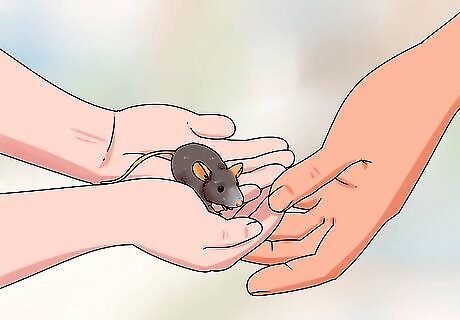
Have children cup their hands to hold the mouse. The mouse might like to walk back and forth between a child’s hands. Remind children to always support the mouse with their palm. If the mouse manages to crawl out of the child’s hands, have them gently scoop the mouse up with a cupped hand. You’ll want to have them do this fairly quickly, so the mouse cannot escape anywhere.

Tell children to practice slow and gentle movements. Mice are agile and sure-footed, so they often like to crawl around on people’s limbs. Advise children to not flail their limbs or make sudden movements.
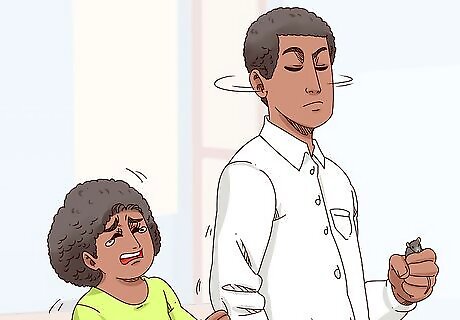
Put the mouse away if the child is not listening. It’s crucial for the safety and survival of the pet mouse that the child follows all mouse-handling instructions. This might be hard for them, especially if the child is very excited about playing with the mouse. If the child makes 1-2 mistakes when handling the mouse, correct them and explain to them that the mouse will need to go back in its home if they don’t handle it in the right way. However, if the child consistently does not listen to instructions, return the mouse to its enclosure and tell the child that they need to follow directions when the mouse is out of its cage. They will likely be upset, but just focus on explaining the reasoning behind your actions to them. It’s all about keeping the mouse safe.














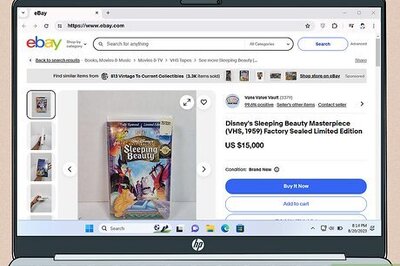


Comments
0 comment